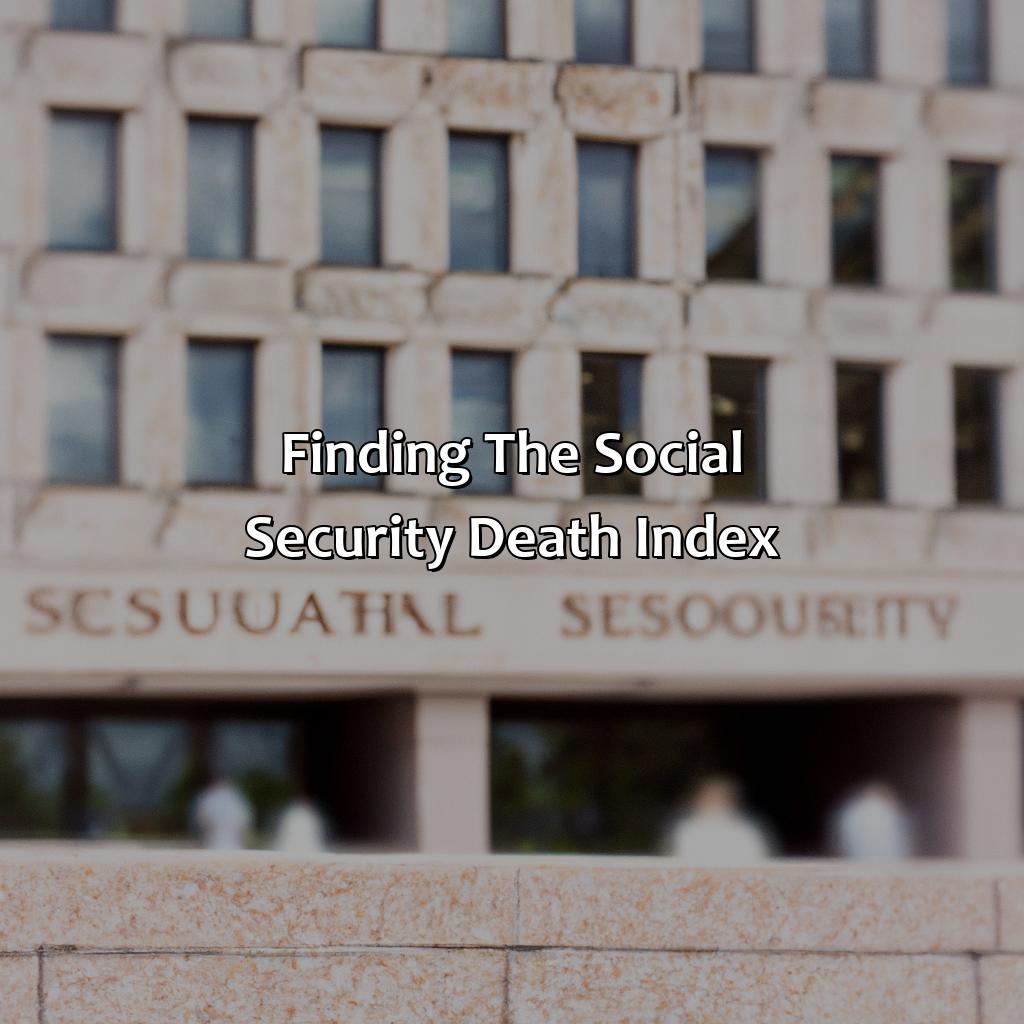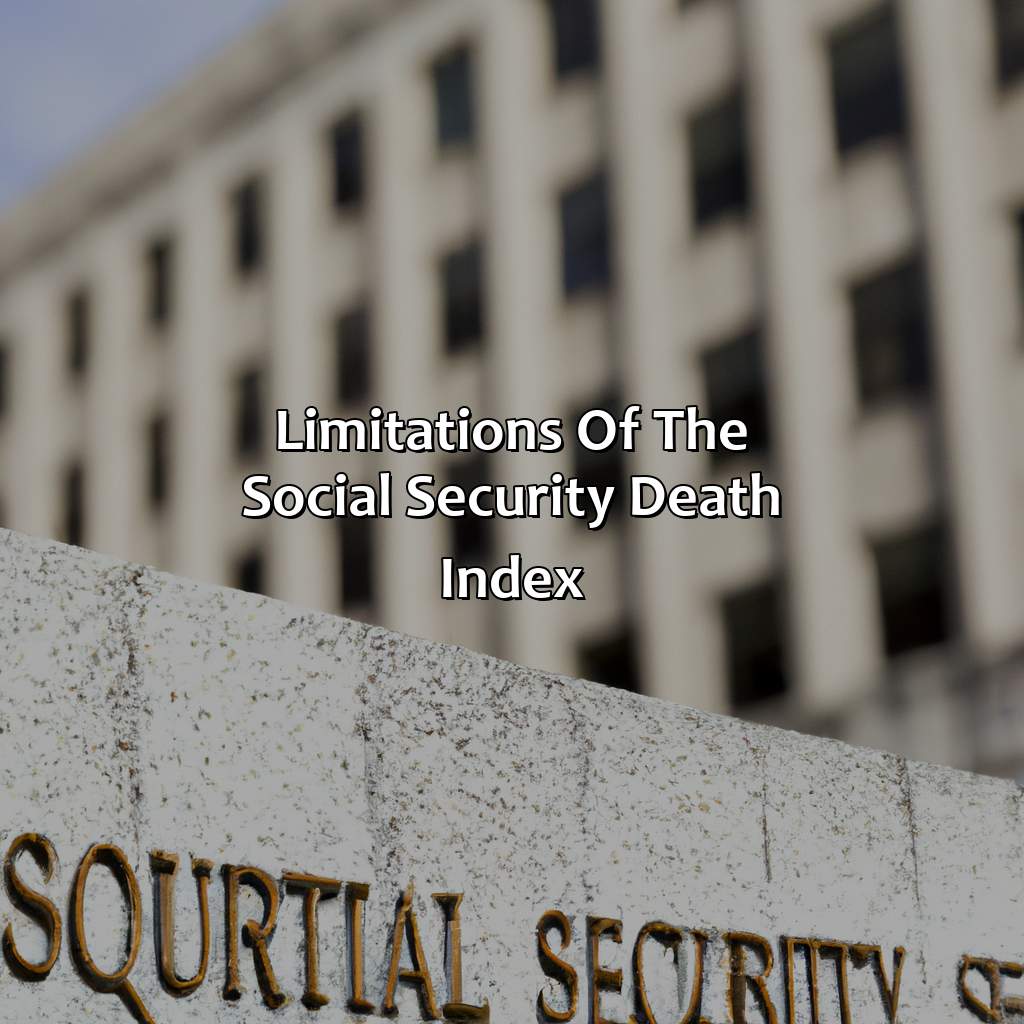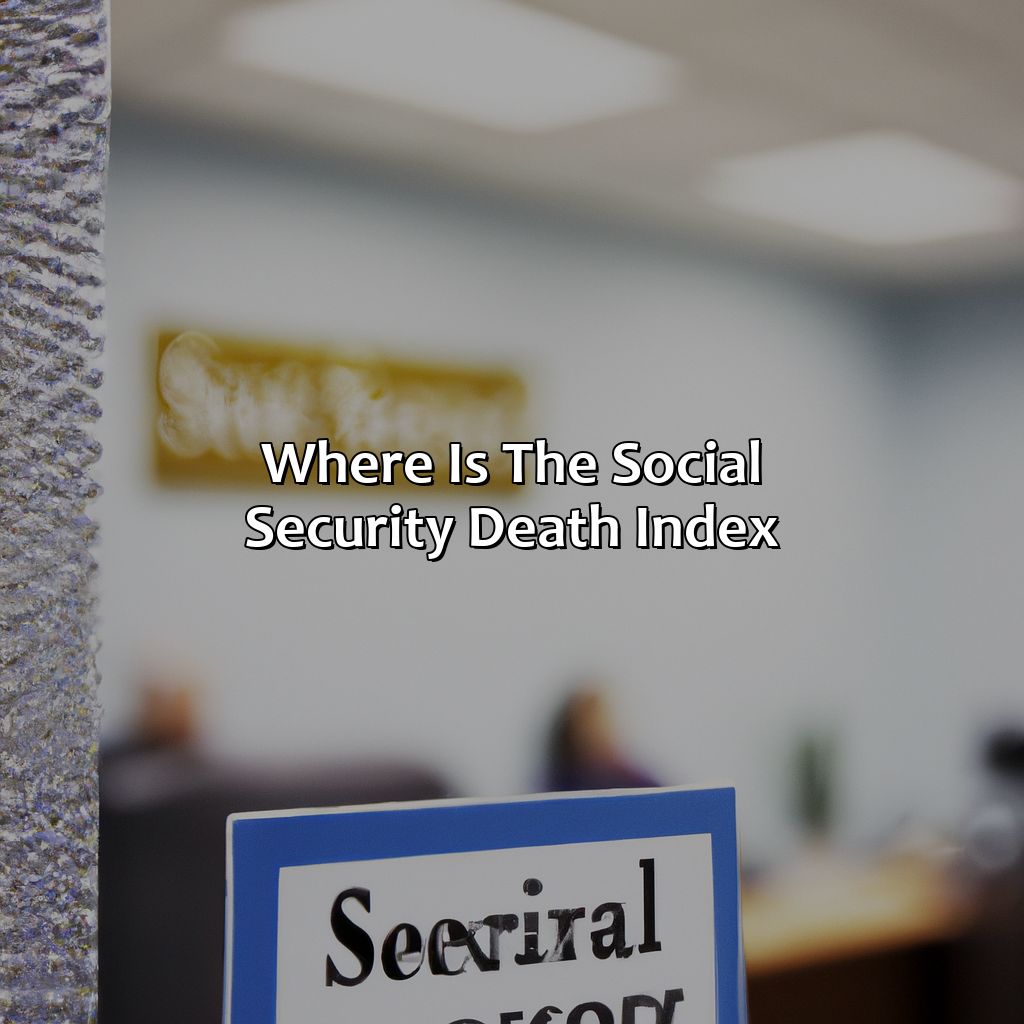Where Is The Social Security Death Index?
Key Takeaway:
- The Social Security Death Index (SSDI) contains information about deceased individuals who had a Social Security number. It is a valuable resource for genealogy research and other purposes.
- To access the SSDI, online resources such as Ancestry.com, FamilySearch.org, and the Social Security Administration’s website can be used. In-person resources such as the National Archives and Records Administration and local libraries can also be utilized.
- Limitations of the SSDI include incomplete and inaccurate data due to errors in recording and privacy concerns. It is important to verify information found in the SSDI with other sources to ensure accuracy.
Do you need help locating a deceased relative’s Social Security Death Index (SSDI) record? This article explains how and where to access the SSDI. With the right information, you can uncover your family’s history.
Finding the Social Security Death Index
Want to access the Social Security Death Index? You have two options: online or in-person. Let’s explore these sub-sections, so you can find the SSDI your way.
Using online resources? We’ll help you out. Prefer in-person? No worries – we got you covered. All you need to do is learn where to look!

Image credits: retiregenz.com by Joel Jones
Using Online Resources to Access the SSDI
Online Methods for Utilizing the Social Security Death Index
Accessing the Social Security Death Index (SSDI) can be accomplished through a variety of online resources. Websites such as Ancestry.com and FamilySearch.org offer searchable databases containing Social Security Administration records. The SSDI provides information on deceased individuals, including their name, birth date, death date, and social security number.
Many genealogy websites also offer indexes of recent deaths, which can be helpful in finding more current records. It is important to note that some years may be missing from the index due to privacy restrictions or incomplete data.
An additional resource for accessing the SSDI is through the National Technical Information Service (NTIS), where one can request certified copies of Social Security Applications and Claims Index records.
A notable fact is that after a person passes away, their social security number is no longer active and cannot be used by anyone else. Therefore, access to the SSDI can provide valuable information when researching family history.
Why search for the dead online when you can ask the living in person?
Using In-Person Resources to Access the SSDI
To gain access to the Social Security Death Index (SSDI), in-person resources can be used. Professionals, genealogists, and government officials can request records from the SSDI through offline channels.
The most common way to access the SSDI is by visiting a local Social Security Administration (SSA) office or regional center, also recognized as field offices. The regional office is responsible for managing all services related to claims like retirement, disability, and Medicare enrollment. But before visiting field offices one has to make an appointment.
Another option would be to visit the National Archives and Records Administration (NARA). This archive has many significant documents that could help viewers in their research, including immigration records and military service records.
Handy tip – During peak hours when traffics of requests are high it may take several weeks or months for an SSA request with no premium payment. Paid offers are offered by third parties which sometimes lead ahead of non-premium payments but charge a fee.
Sorry folks, the Social Security Death Index doesn’t reveal any information about the afterlife.
Limitations of the Social Security Death Index
Understand the boundaries of the Social Security Death Index. It’s an essential tool for genealogists and researchers. But there are drawbacks. Data in the SSDI can be incomplete and wrong. Plus, there are privacy issues, making it an ethical puzzle.

Image credits: retiregenz.com by Joel Arnold
Incomplete and Inaccurate Data in the SSDI
The data available on the Social Security Death Index (SSDI) is incomplete and inaccurate. The SSDI is supposed to contain information on all deaths reported to the Social Security Administration, but it is infamous for incomplete records and errors. This poses a challenge for people searching for their family history or conducting genealogical research.
Inaccuracies in the SSDI are mainly due to delayed reporting of death records by family members or funeral homes, resulting in delays in updating the database. Additionally, errors may arise from misspellings on official documents, variations in names, and simple data entry mistakes. These inaccuracies can make searches more difficult than necessary.
Despite these limitations, the SSDI remains an invaluable resource to genealogists, historians, and researchers looking for detailed information about individuals who have passed away. In recent years, laws have been enacted restricting access to SSDI records that disclose sensitive personal information.
Nevertheless, with improved data entry protocols and better record-keeping technologies emerging over time, we can hope for greater accuracy and completeness of the SSDI’s vast database of deceased individuals’ records.
A significant event that helped establish the importance of databases like SSDI was after 9/11 when many survivors were presumed dead and were unaccounted for. Detectives used various databases including SSDI to help locate these people, but it took months before these databases became publicly accessible by approved entities to avoid compromising private citizen’s security.
Privacy goes out the window when you’re dead, but apparently it’s still a concern with the Social Security Death Index.
Privacy Concerns with the SSDI
The SSDI, which contains records of deceased individuals who were receiving Social Security benefits, has raised serious Privacy Concerns. It is widely available and searchable online by anyone, including fraudsters and identity thieves. Most notably, the SSDI exposes private information such as date of birth and social security number. This has led to misuse by scammers and other nefarious actors who have used the data to commit financial fraud or other crimes.
In several instances of identity theft cases, the perpetrator relied on information obtained from the SSDI. The most vulnerable groups include family members grieving over a loved one’s death, who are often left with numerous administrative tasks involving documentation that require access to their personal data.
It is worth noting that there have been amendments made since 2013 in an attempt to curb illegal activity related to the SSDI access; nevertheless, one must always be cautious about sharing personal information, or utilizing public Wi-Fi when accessing such databases.
The importance of maintaining our personal information secure cannot be overemphasized. Regardless of age or status as a beneficiary or not, it’s fundamental always to contest these sensitive details’ exposition whenever possible. Security is more critical than ever before, and it is essential we take advantage of any resources available to us – starting with making sure our names don’t end up on any accessible databases without consent.
Some Facts About Social Security Death Index:
The Social Security Death Index (SSDI) is a database of deceased individuals who had social security numbers and whose deaths were reported to the Social Security Administration. (Source: Ancestry)
The SSDI is used by genealogists, researchers, and investigators to obtain information on deceased individuals, including their full name, birth and death dates, and last residence. (Source: FamilySearch)
The SSDI is a valuable resource for family historians, offering more than 90 million records dating back to the 1930s. (Source: MyHeritage)
Some genealogy websites, like Ancestry and MyHeritage, offer access to the SSDI through paid subscriptions. (Source: The Balance Everyday)
The SSDI is not a comprehensive record of all deaths in the United States and may not include recent deaths or deaths of individuals who never held a social security number. (Source: Social Security Administration)
FAQs about Where Is The Social Security Death Index?
Where is the Social Security Death Index?
The Social Security Death Index (SSDI) is available online at various websites including Ancestry.com, FamilySearch.org, and the Social Security Administration’s (SSA) website.
What is the Social Security Death Index?
The Social Security Death Index is a database that contains records of deceased individuals who had a Social Security number and whose death was reported to the Social Security Administration.
How can I search for someone’s death record in the Social Security Death Index?
You can search the Social Security Death Index by entering the person’s name, Social Security number, birth date, death date, and other identifying information into the search fields on a website that offers access to the database, such as Ancestry.com or FamilySearch.org.
Is there a cost to access the Social Security Death Index?
Some websites may require a subscription or a fee to access the Social Security Death Index. However, the SSA’s website offers free access to a limited version of the database, which contains the names and birth/death dates of deceased individuals who had a Social Security number and whose death was reported to the SSA.
Can I request a copy of someone’s Social Security Death Index record?
No, the SSA does not provide copies of Social Security Death Index records. However, you can obtain a copy of a deceased person’s Social Security application, which may contain information such as the person’s Social Security number, birth date, and parents’ names. You can request this information from the SSA by submitting a Form SSA-711.
What information is included in a Social Security Death Index record?
A Social Security Death Index record typically includes the person’s name, Social Security number, birth date, death date, and the state where the person’s Social Security number was issued.
 Checkout this IRS Loophole
Checkout this IRS Loophole 
